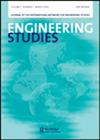工程设计模型作为决策辅助工具
IF 1.3
3区 工程技术
Q2 EDUCATION, SCIENTIFIC DISCIPLINES
引用次数: 1
摘要
尽管模型和建模是工程设计的核心,但与科学哲学中的模型或建模相比,它们受到的关注要少得多。本文借鉴哲学文献中关于科学模型的见解来阐明工程模型。许多明显的差异只是程度的问题。工程设计中的模型不只是作为表征或更一般的认知工具。相反,模型是促进决策制定的核心。这一点在科学研究的实验室实践中似乎没有在工程设计中那么明显。在工程中,通常只有设计人员了解和确定模型与其目标系统之间的关系。在这一点上,他们充当了真相制造者和真相守护者的角色。这种设计的社会过程对于从元角度理解模型的角色和建模是必不可少的,但是当模型被重用时,它也与工程师相关。更好地理解这些角色可以帮助阐明模型在工程中的角色。为了说明这些观点,本文以3D打印皮划艇的设计为例,展示了即使是相当适度的工程设计项目也需要创建多种不同的模型。本文章由计算机程序翻译,如有差异,请以英文原文为准。
Models in Engineering Design as Decision-Making Aids
Although models and modeling are central to engineering design, they have received much less attention than models or modeling in the philosophy of science. This paper draws on insights from the philosophical literature on models in science to elucidate models in engineering. Many of the apparent differences are a matter of degree. Models in engineering design do not function solely as representational or more general epistemic vehicles. Rather, models are central to facilitating decision making. This seems to be less pronounced in laboratory practices for scientific research than in engineering design. In engineering, often only the designers understand and determine the relation between the model and its target system. In this, they serve as truth makers and truth keepers. This social process of design is essential to understanding the role of models and modeling from a meta perspective, but is also relevant to engineer when models are reused. A better understanding of these roles can help to illuminate the roles of models in engineering. To illustrate these points, this paper uses the design of a 3D printed kayak as an example that shows how even a fairly modest engineering design project requires the creation of a multitude of different models.
求助全文
通过发布文献求助,成功后即可免费获取论文全文。
去求助
来源期刊

Engineering Studies
ENGINEERING, MULTIDISCIPLINARY-HISTORY & PHILOSOPHY OF SCIENCE
CiteScore
3.60
自引率
17.60%
发文量
12
审稿时长
>12 weeks
期刊介绍:
Engineering Studies is an interdisciplinary, international journal devoted to the scholarly study of engineers and engineering. Its mission is threefold:
1. to advance critical analysis in historical, social, cultural, political, philosophical, rhetorical, and organizational studies of engineers and engineering;
2. to help build and serve diverse communities of researchers interested in engineering studies;
3. to link scholarly work in engineering studies with broader discussions and debates about engineering education, research, practice, policy, and representation.
The editors of Engineering Studies are interested in papers that consider the following questions:
• How does this paper enhance critical understanding of engineers or engineering?
• What are the relationships among the technical and nontechnical dimensions of engineering practices, and how do these relationships change over time and from place to place?
 求助内容:
求助内容: 应助结果提醒方式:
应助结果提醒方式:


